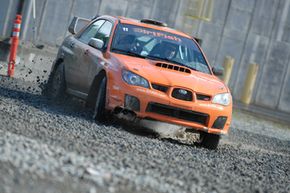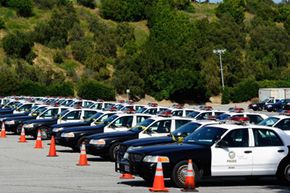It's snowing. It's raining. It's doing both at the same time. Someone put dish soap on the road. The tanker truck that just wrecked in front of you was filled with melted butter. All you want to do is get home and out of the snow/rain/dish soap/butter before "Community" comes on.
So you go a bit faster than conditions require. You push it at the yellow light, because it's safer to keep going around that turn than to suddenly stop, right? Stopping is like asking the guy behind you to please, if he wouldn't mind, ram his front bumper into your rear bumper so the two of you can hang out by the curb over there and exchange insurance information. Maybe he stopped at the store and has a loaf of bread in the car, which you can use to help sop up the melted butter slathering the street?
Advertisement
This is how most of us normal drivers end up in a skid -- going around a corner too fast for conditions. Too much power, not enough traction. If you're a stunt driver, you yell "Yeee-haw!" and swing your vintage muscle car around the corner anyway. Or if you're an action hero, you make a pun about the mess in the street: "This butter be good," for instance.
But if you're the average driver, you want to get out of that skid, and fast. You want traction, you want the ability to control the car, and you want to avoid hitting anything while you regain control. These are reasonable things to want, and there are very reasonable ways to get them. And though the next few pages will detail very specific slides and vehicles, the technique for getting out of a skid is the same no matter what you're driving -- front-wheel drive, rear-wheel drive, all-wheel drive, manual, stick shift, motorcycle -- anything.
Advertisement


